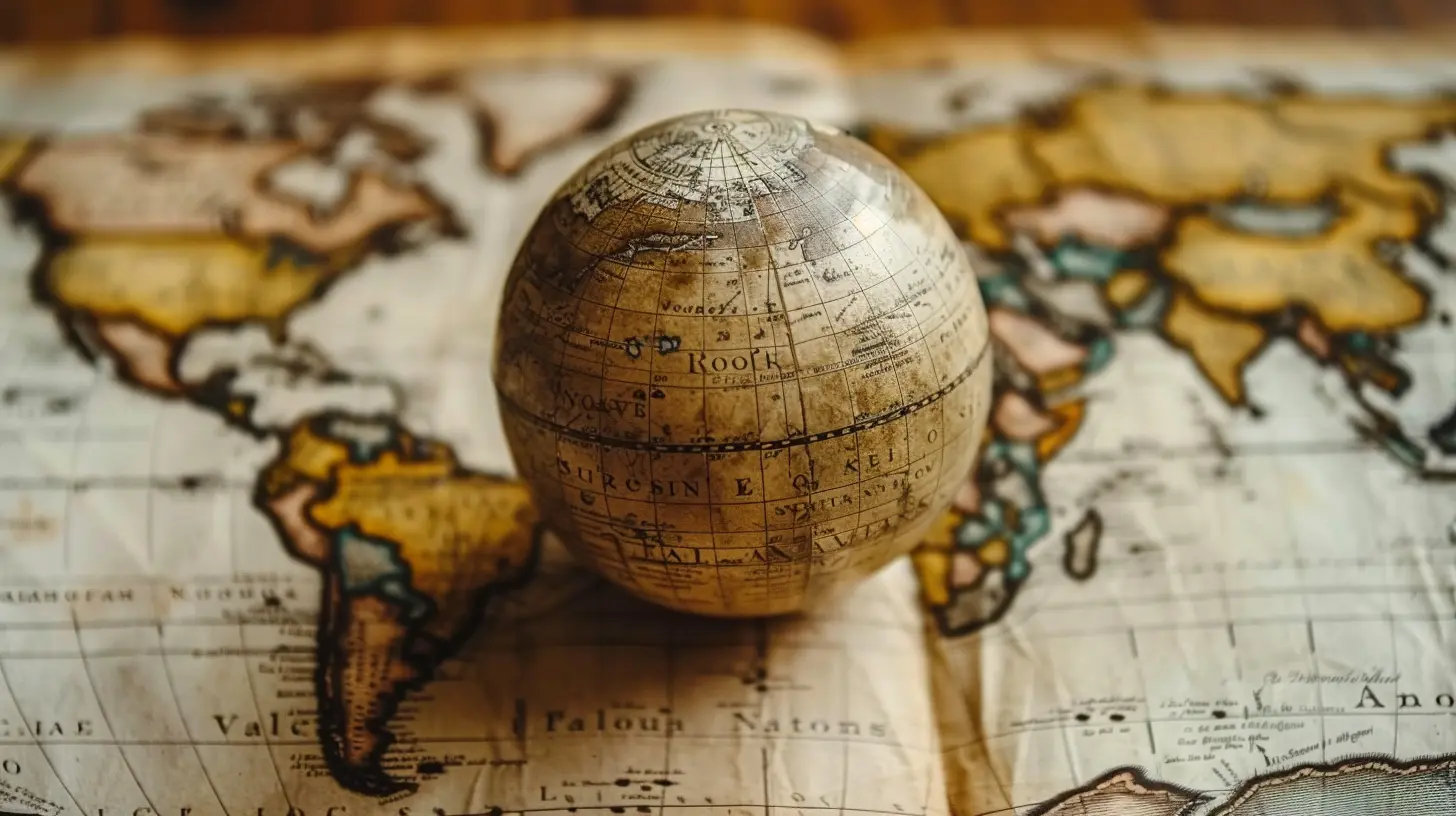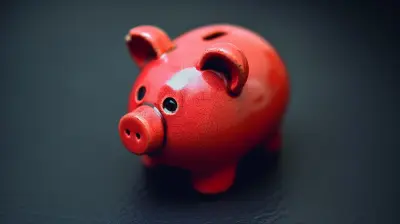Understanding the Role of Sovereign Wealth Funds in Global Markets
22 September 2025
Let’s face it—“sovereign wealth funds” doesn’t exactly roll off the tongue like “hotdogs” or “Netflix binge.” But here’s the thing: these colossal financial behemoths are quietly shaping the global markets, all while most of us are just trying to figure out why our coffee costs $6. So grab your favorite mug, maybe a calculator if you’re feeling spicy, and let’s break this down in plain English—with a few laughs along the way.

What on Earth Is a Sovereign Wealth Fund (SWF)?
Imagine if a country had a massive piggy bank. But instead of hoarding coins under its figurative mattress, it invested the money in stocks, bonds, real estate, and sometimes even tech startups. That, my friends, is a sovereign wealth fund.To put it another way, a sovereign wealth fund (or SWF, because we love a good acronym) is like a nation’s investment portfolio. Instead of letting surplus cash gather digital dust, countries use SWFs to potentially grow their money on the global stage. These funds are managed by governments or central banks and typically funded by revenues from natural resources like oil, or large trade surpluses.
Think of it this way: you know how Grandma said, “Don’t spend it all in one place”? Well, sovereign wealth funds are countries taking that same advice—and investing globally.

Where Does the Money Come From?
No magic money trees here. SWFs generally get their cash from:- Natural Resources: Oil, gas, minerals—basically anything you dig out of the ground and make money from.
- Trade Surpluses: When a country exports way more than it imports, it racks up cash. Like a savvy eBay seller turning profits and reinvesting.
- Foreign Currency Reserves: If a government’s got extra cash lying around, it might decide to make that money work harder.
Let’s put this in perspective with a real-world superstar: Norway’s Government Pension Fund Global is one of the biggest sovereign wealth funds in existence. It’s fueled by oil revenues and worth over $1 trillion. That’s trillion with a “T.” (Don’t feel bad if you just whispered “what?!” to yourself.)

Global Market Movers (AKA: Why You Should Care)
Now, you may be wondering, “Okay, cool, lots of zeroes—why does this matter to me?” Great question. SWFs are heavyweights in the global economy. When they buy, sell, or even think about adjusting their portfolios, markets listen. A lot like when Elon Musk tweets and crypto prices go haywire—except with more spreadsheets and fewer memes.Here’s how they influence global markets:
1. Big-Time Investors
SWFs aren’t messing around. They manage trillions of dollars worldwide. That means when they invest in a company, it’s not a few shares—they’re buying a slice of the pie big enough to change the flavor.For example, if a country’s SWF buys a significant stake in a U.S.-based tech company, it can affect that company’s stock prices and even its strategy. It’s like having a silent partner show up with a briefcase full of money and some polite suggestions.
2. Long-Term Focus
Unlike hedge funds, which often chase short-term wins like financial adrenaline junkies, SWFs play the long game. They think in decades, not days. That’s super important because it means they provide market stability. They’re not going to cash out overnight because TikTok told them to.Their steady hand can help balance out the crazy rollercoaster of daily market fluctuations. So in a world full of crypto bros and meme stocks, it’s nice to have a few calm, long-term thinkers at the table.
3. Infrastructure & Development Projects
SWFs also invest in real-world projects—think highways, airports, renewable energy, and even affordable housing. That’s right, these funds aren’t just throwing their money into stocks; they're helping build the actual world we live in.Take the Abu Dhabi Investment Authority or Singapore’s GIC—they've invested in everything from luxury hotels to data centers. You might have even stayed in a hotel funded by an SWF and never even realized it. (Next time check the fine print on your room key card.)

Who’s Got One? (Spoiler: Not Everyone)
So, which countries run these giant funds? Mostly the ones rolling in oil revenue or big export bucks. Here are a few notables:- Norway – The oil fund (as we mentioned) is a poster child of responsible investing.
- China – Home to several SWFs, including the massive China Investment Corporation.
- United Arab Emirates – With several high-stakes funds like the Mubadala Investment Company.
- Singapore – Efficient and globally diversified, just like you'd expect.
- Saudi Arabia – The Public Investment Fund (PIF) is going big in tech, entertainment, and even sports teams.
Meanwhile, countries with budget deficits or high debt don’t usually have the luxury of setting up SWFs. I mean, can you imagine using a credit card to make an investment portfolio? Yeah, not ideal.
What Makes Them Tick? (Or Invest?)
Good question. These funds don’t just throw darts at a board (although that might be fun to watch). They generally have a few guiding philosophies:1. Diversification
You’ve heard “don’t put all your eggs in one basket,” right? SWFs live and breathe that mantra. They spread their investments across industries, countries, and asset types. Stocks, bonds, real estate, private equity—you name it, they’re probably in it.2. Risk Management
These aren’t riverboat gamblers. SWFs are usually pretty conservative. They don’t want flashy gains if it means waking up broke. Their portfolios are built to weather storms—financial, political, or otherwise.3. Strategic Objectives
Some SWFs have national goals beyond just making money. They might aim to foster technological development, secure energy sources, or enhance a country’s global influence. It’s investing with a side of politics and strategy.
The Good, The Bad, and The Controversial
Let’s not pretend SWFs are all rainbows and responsible investing. There’s some shade too.👍 The Good
- Long-Term Stability: Their investment horizon is longer than your last relationship.- Funding Future Generations: Many SWFs are designed to support citizens decades from now. That’s forward-thinking at its finest.
- Counter-Cyclical Impact: They often invest during downturns, injecting cash when the world needs it most.
👎 The Bad
- Lack of Transparency: Some SWFs are about as transparent as a brick wall. That makes people nervous, especially in politically sensitive areas.- Political Influence: When a foreign government invests heavily in your country, it raises eyebrows and sometimes, international tension.
- Ethical Concerns: Not all investments are squeaky clean. Critics argue that some SWFs funnel money into unsustainable or controversial industries.
So… Should We Be Worried?
It depends who you ask. Some economists love SWFs for their stabilizing force and long-term vision. Others raise valid concerns about ethical investments and foreign influence.But here’s a hot take: SWFs are here to stay, and probably growing faster than your student loan debt. With climate change, global infrastructure needs, and economic uncertainty all on the radar, these funds are going to play an even bigger role in the years ahead.
Final Thoughts: Why You Should Keep SWFs on Your Radar
If you’re an investor, understanding sovereign wealth funds gives you an edge. These funds are trendsetters, market movers, and massive players in the economic sandbox. Their actions can impact the stock market, property prices, and even the success of major companies.If you're not an investor? Well, you still live in a world they’re shaping—directly or indirectly. From the roads you drive on to the tech in your pocket, sovereign wealth funds might have had a hand (and a hefty checkbook) in it.
So the next time you hear “sovereign wealth fund” and your eyes start to gloss over, just think of it as a country’s way of flexing financially—building wealth not just for today, but for generations to come.
And now you can say you understand them… with a wink and a smile.
all images in this post were generated using AI tools
Category:
Market TrendsAuthor:

Knight Barrett
Discussion
rate this article
1 comments
Veda McIntyre
Great article! It effectively highlights how sovereign wealth funds influence global markets. Understanding their investment strategies and long-term goals can enhance our insights into economic stability and international financial dynamics. Thanks for sharing!
September 25, 2025 at 4:35 AM

Knight Barrett
Thank you for your thoughtful comment! I'm glad you found the article insightful.


